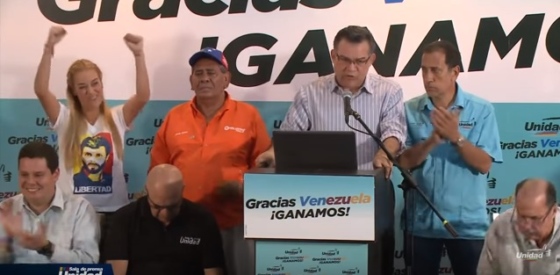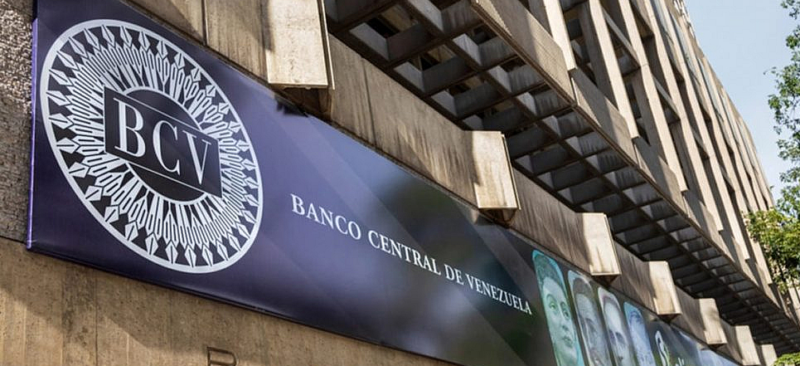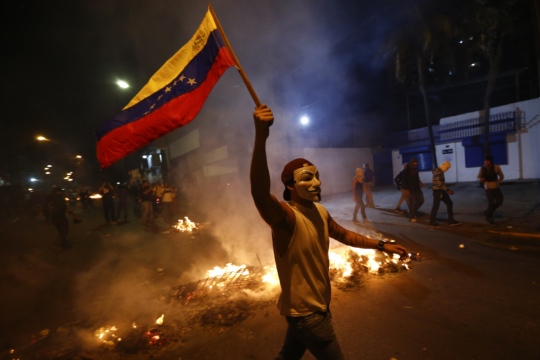
What Does the Future Hold for Venezuela?
What do the election results mean for President Nicolás Maduro and his grip on the presidency?
A Daily Publication of The Dialogue
Inflation in Venezuela hit its lowest level in almost a decade in March, finishing the first quarter of 2022 with a rate of 11.4 percent, according to data from the Andean country’s central bank. Prices in the country have stabilized, thanks in part to the wider circulation of hard currencies, including the U.S. dollar. Some analysts estimate that Venezuela’s economy could grow 20 percent this year due to an increase in hydrocarbon output and the rising global price of oil, Bloomberg News reported. What accounts for the slowdown in consumer price growth in Venezuela, and will President Nicolás Maduro’s policies allow for this trend to continue? What are the drivers for economic growth in the Andean country, and can they be sustained in the long term? What sectors would benefit the most from continued economic growth in Venezuela?
Ruth Krivoy, country analyst for Venezuela at GlobalSource Partners and former president of the Central Bank of Venezuela: “Exchange rate policy has been the main anti-inflationary pillar, with heavy sales of foreign exchange by the central bank, within a highly contractive monetary and fiscal policy stance, that slowed down consumer price growth, while deepening recession and feeding inequality. Last November, the central bank also imposed a ceiling on the exchange rate that banks apply when reselling to clients the dollars purchased weekly from the central bank. Recently, the bank began issuing foreign exchange risk hedging securities to sterilize high-powered money after pausing its open-market operations for three years. A permissive import policy geared to address shortages and widespread dollarization also helped. Authorities are focused on stabilizing the nominal exchange rate to lower inflation and ‘de-dollarize’ the economy. The government has the funds to defend the bolívar if fiscal and monetary policy remain strongly contractive. Challenges will come from political pressures to allow for higher oil revenues to trickle down ahead of the 2024 elections and stronger imported inflation triggered by the Russian invasion of Ukraine. Last year, the economy moved from collapse and hyperinflation to modest growth with high inflation. The main growth drivers were the removal of foreign exchange controls and a de facto relaxation of price controls, improving business conditions and generating short-term opportunities. But the government has not shown the intention, or the political capacity, to dismantle the legal scaffolding that undermined the rule of law, hindering investment. Moreover, there is very little room to allow for bank credit growth. Demand for money is weak, animal spirits are lethargic and exchange rate stability rests on the strangulation of credit. Commerce, transportation and storage services are the earliest winners. Communications, agribusiness and real estate services are also growing. This year will be the first since 2016 with positive growth rates in all sectors. The current policy framework favors non-tradable sectors. Tradables’ growth will lag.”
Ricardo Hausmann, founder and director of Harvard’s Growth Lab and former chief economist of the Inter-American Development Bank: “Inflation in Venezuela was tamed with very orthodox remedies. Enormous fiscal deficits that were monetized caused the 2016-2019 period of hyperinflation. These deficits were caused by huge subsidies to authorized imports, gasoline, credit and a large expansion of the number of employees and pensioners. The deficit was brought under control by eliminating exchange rate differentials, raising gasoline prices, eliminating private sector credit (through 100 percent marginal reserve requirements) and allowing public sector wages and pensions to decline to less than $10 a month. The bounce-back of the economy is less of a puzzle than its previous collapse. If you index the GDP of 2013 to 100, it fell by 2021 to 20. A 20 percent increase from there means it will go up to 24. The persistent collapse is still the puzzle.”
Asdrúbal Oliveros, director at economic analysis firm Ecoanalítica: “At the economic level, the results of the first quarter continue to point to a recovery in Venezuelan activity. After the passage of the most critical phases of the Covid-19 pandemic, both private business and the public sector seem to show better performance. In public matters, the rebound in global demand for post-pandemic crude oil and the impact of the war between Russia and Ukraine on global oil markets have provided the executive branch with additional resources in recent months, despite the discount that sanctions still impose on the collection of Venezuelan oil. If such trends continue, along with the status quo of the sanctions, Venezuela could receive about $17.69 billion at the end of the year for oil alone. In the non-oil sphere, sectors such as trade, manufacturing and banking maintain part of the improvements seen since the end of 2021, favored by a context of less adverse prices and a global supply chain still a little affected by the new post-Covid-pre-war scenario. However, the higher prices of raw materials and freight rates caused by the current global context could affect part of the reactivation of the non-oil business in the coming months, particularly in the agricultural sector. Regarding prices, both official figures and data from Ecoanalítica validate a new slowdown in domestic inflation in the first quarter of the year, in which prices grew an average of 5.8 percent per month between January and February.”
Gustavo Roosen, member of the Advisor board and president of the Institute for Advanced Management Studies in Venezuela: “After an accumulated 75.29 percent collapse in GDP between 2014 and 2020, the Venezuelan economy is geared toward modest economic growth. A ‘buffer effect’ will take place after such a strong contraction and the boost generated by high oil prices. But the 20 percent that Credit Suisse projects will be highly unlikely. A consensus forecast among the 12 main international firms that analyze Venezuela shows that on average the estimated GDP growth for Venezuela is 3.80 percent, and the median is 4.25 percent. The multiple macroeconomic imbalances that led Venezuela to the worst economic performance in the world in the last 40 years are still present. Evidence of this are three economic policy options implemented since 2019. The first is an openly appreciated exchange rate, which sooner or later will be adjusted in pursuit of the equilibrium exchange rate and the level of inflation that continues to be the highest in the world. Certainly, 1.4 percent was the figure published by the Venezuelan central bank for March 2022, but the annualized figure for March 2021-March 2022 is 284.4 percent–a figure more than 40 times the average projected for Latin America in 2022. Secondly, economic policies that favor the imports of 7,000 items without VAT and without tariffs create a false sense of well-being but severely damage national industrial and agricultural production. The third economic policy option is that oil production has risen with the corrections that the 16 main contractors in PDVSA’s own fields have been able to carry out (‘quick wins’). None of them will bring new investments and ‘drilling activation’ that will result in a significant increase in oil production.”
Jonathan Coles, partner at Renaissance Growth Advisory and former Venezuelan agriculture minister: “Even though the official figures for inflation seem overly optimistic, it is clear that the government and the central bank have worked to control inflation. The central bank has used the windfall income generated by higher oil prices and additional production to buy dollars and stabilize the exchange rate, and the prospects seem favorable for continuing this stability in the near term. The central bank has slowed monetary emissions. Inflation should be significantly below the 686 percent of last year, probably below 70 percent. Growth prospects are positive and could reach as much as 8 percent, depending mainly on what happens with investments in the oil sector, which in turn depends on the softening of sanctions that have prevented investment by the companies that know the country and its potential best. It is clear that there have been less arbitrary measures on the part of the government, but there are still laws from recent years that make it risky for investors in the oil sector. If the negotiations with the United States turn out favorably for diminishing sanctions and reducing risks for investors, production could continue to increase from the 800,000 barrel levels at present. Venezuela will potentially benefit from the sanctions on Russia, but it has also become dependent on some of the financial channels that are now under severe limitations by U.S. sanctions. So the possibilities of leveraging the present opportunities will require careful and decisive steps on the part of the Venezuelan government. Commerce and services have taken the most advantage of inflation control and new growth, while manufacturing continues to suffer. It will take smart policy management to consolidate and expand growth while controlling inflation in the next year.”
 The Latin America Advisor features Q&A from leaders in politics, economics, and finance every business day. It is available to members of the Dialogue’s Corporate Program and others by subscription.
The Latin America Advisor features Q&A from leaders in politics, economics, and finance every business day. It is available to members of the Dialogue’s Corporate Program and others by subscription.
What do the election results mean for President Nicolás Maduro and his grip on the presidency?
An economic and humanitarian crisis, precipitated by the Maduro regime, has brought Venezuela to the brink of collapse.
Iván Duque, a conservative former senator, on Sunday won Colombia’s presidential runoff election. What does it mean for the country?
 Venezuela’s rate of inflation has fallen, and some analysts are expecting double-digit growth in the country’s economy this year. Venezuela’s central bank is pictured. // File Photo: Venezuelan Government.
Venezuela’s rate of inflation has fallen, and some analysts are expecting double-digit growth in the country’s economy this year. Venezuela’s central bank is pictured. // File Photo: Venezuelan Government.

